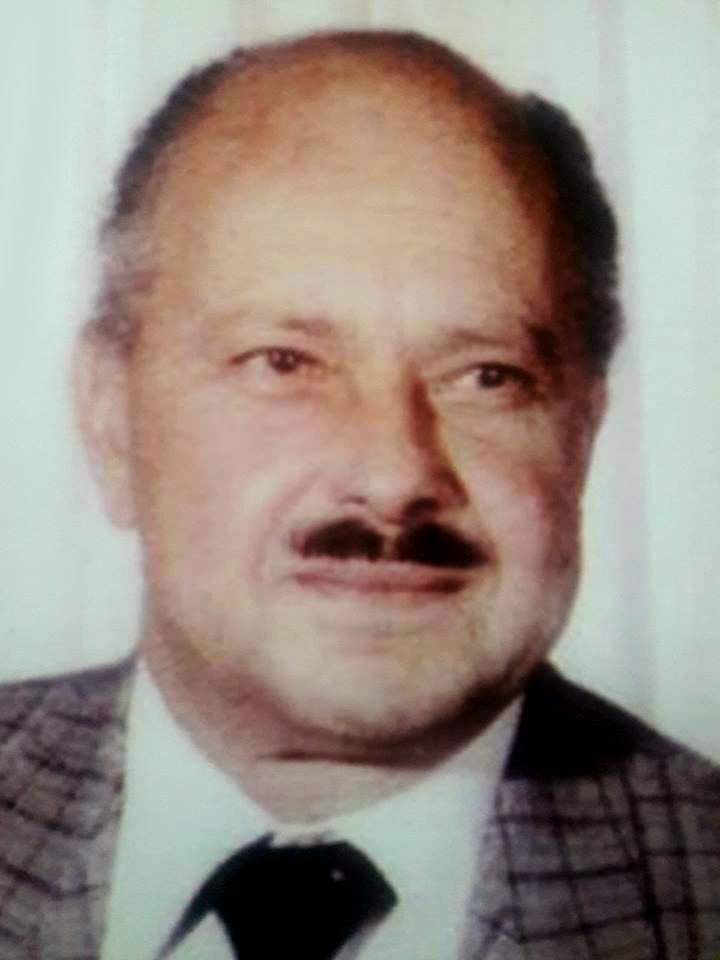QAMHAWI, WALID (1923-2005)
Born in 1923; grew up in Nablus; studied Medicine at AUB, graduating in 1947 (MD); continued to specialize in Surgery at Cairo University (1948); returned to Nablus and worked as a surgeon in the Iraqi Red Crescent Hospital, which was founded by the Salvation Army from May 1948-May 1949; opened his own clinic as a general practitioner in 1949 and a small private hospital in 1950; also initiated the establishment of the Women’s League Maternity Hospital for Refugees (WLMHR) in Nablus and served on a voluntary basis as its director from 1949-1964 (the hospital later developed into the Ittihad An-Nisai Hospital); shortly joined the ANM in the early 1950s; in 1954, opened a Family Planning Center at the WLMHR and published a book (Tanzim An-Nasl - Family Planning) on the subject, which was the first in its field in the Arab World; presented a weekly “health corner” from the Jordanian Broadcasting Station in 1955-1957; in 1956, established the Cooperative Cultural Club in Nablus, promoting Palestinian artists and culture, but it was closed down by Jordan for alleged political activities in 1957; was repeatedly arrested during the late 1950s, especially after becoming head of the Nablus branch of the Ba‘ath Party (replacing after Bassam Shaka‘a who had left for Syria); was a Council member of the Jordanian Medical Association from 1957-1961; co-founder and elected Assistant Sec.-Gen. of the Arab Medical Union in Cairo in 1961; went to Dublin, Ireland, and gained a Diploma in Gynecology and Obstetrics in 1962, and undertook research on male infertility at the Uppsala University in Sweden; returned to Nablus, continued practicing and opened his own Fertility Center (the first of its kind) in 1963; became chair of the Jordanian Medical Association in 1963 (until 1969); was member of the first PLO Exec. Committee in 1964 but soon became part of the ’opposition’ within the Exec. Committee (together with Bahjat Abu Gharbiyyeh, Haidar Abdul Shafi, and Abdel Khaleq Yaghmour) and resigned in May 1965; after the 1967 occupation, helped establish Al-Maqassed Hospital in Jerusalem; also founded with his brother Marwan a foodstuff mill for poultry and cattle in 1969; was deported for two months to Lebanon in Sept. 1970 in retaliation for a PFLP hijacking; was deported again - this time permanently - in Dec. 1973 to Jordan; joined the PLO in Beirut, resumed position on the PLO Exec. Committee from 1974 and was elected head of the Palestinian National Fund, a post from which he resigned in April 1981; settled in Amman in late 1981; in 1984, was entrusted by the PLO Exec. Committee with founding Al-Quds Open University (the project was suspended in 1989); was allowed to re-enter the West Bank in 1993; became head of the Nablus Medical Association and Planned Parenthood branch; author of Catastrophe & Construction (An-Nakba wa Al-Bina’a, 1956), dealing with the Palestinian holocaust at the hands of the Zionists; also published his memoirs in 2000; was buried in Amman in 4 January 2005.

قمحاوي، وليد محمد زكي (1923-2005 ) من مواليد عام 1923؛ نشأ وترعرع في مدينة نابلس ودرس في مدرسة النجاح الوطنية؛ تخرج من كلية الطب في الجامعة الأمريكية في بيروت عام 1947؛ تابع دراسته وتخصص في الجراحة في جامعة القاهرة (1948)؛ عاد إلى نابلس وعمل كجراح في مستشفى الصليب الأحمر العراقي الذي أنشأه جيش الخلاص لمدة عام (أيار/ مايو 1948-مايو/ أيار 1949)؛ فتح عيادته الخاصة كطبيب عام 1949 ومستشفى خاص صغير عام 1950؛ بادر أيضاً بتأسيس مستشفى الولادة للاجئين في نابلس وعمل مديراً بشكل تطوعي (1949-1964) (فيما بعد تم تطوير المستشفى إلى مستشفى الاتحاد النسائي)؛ انضم إلى حركة القوميين العرب في أوائل الخمسينات؛ في عام 1954، فتح مركزاً لتنظيم الأسرة في مستشفى الولادة للاجئين ونشر كتاباً (تنظيم الأسرة)، والذي كان الأول في مجاله في العالم العربي؛ قدم برنامجاً أسبوعياً «الزاوية الصحية» من محطة الإذاعة الأردنية لمدة عامين (1955-1957)؛ في عام 1956، أسس النادي الثقافي التعاوني في نابلس، بهدف تعزيز الفن والثقافة الفلسطينية و أغلقته السلطات الأردنية عام 1957؛ اعتقل بصورة متكررة في أواخر الخمسينات خاصة بعد أن أصبح رئيساً لفرع حزب البعث في مدينة نابلس خلفاً لبسام الشكعة الذي غادر إلى سوريا؛ عضو مجلس الجمعية الطبية الأردنية خلال (1957-1961)؛ أحد مؤسسي وانتخب مساعد أمين عام الاتحاد الطبي العربي في القاهرة عام 1961؛ ذهب إلى دبلن، ايرلندا، وحاز على شهادة دبلوم في الأمراض النسائية والولادة عام 1962 وأجرى بحثاً عن العقم عند الرجال في جامعة أبسالا في السويد؛ عاد إلى نابلس وتابع ممارسة الجراحة وفتح مركزاً للخصوبة خاص به (الأول من نوعه) عام 1963؛ أصبح رئيساً للجمعية الطبية الأردنية عام 1963 (حتى عام 1969)؛ عضواً لأول لجنة تنفيذية لمنظمة التحرير الفلسطينية عام 1964 وسرعان ما أصبح جزءاً من فريق «المعارضة » في داخل اللجنة التنفيذية (مع بهجت أبو غربية، حيدر عبد الشافي وعبد الخالق يغمور) واستقال في أيار/ مايو عام 1965؛ بعد الاحتلال الإسرائيلي للأراضي الفلسطينية عام 1967، ساعد في تأسيس مستشفى المقاصد بالقدس؛ أسس أيضاً مع شقيقه مروان طاحونة للدواجن والمواشي عام 1969؛ تم إبعاده لمدة شهرين إلى لبنان في شهر أيلول/ سبتمبر عام 1970 على إثر عملية اختطاف طائرة نفذتها الجبهة الشعبية لتحرير فلسطين؛ تم ترحيله مرة ثانية-هذه المرة بصورة دائمة-في كانون الأول/ ديسمبر عام 1973 إلى الأردن؛ انضم إلى منظمة التحرير الفلسطينية في بيروت وشغل منصباً في اللجنة التنفيذية لمنظمة التحرير الفلسطينية من عام 1974 وانتخب رئيساً للصندوق الوطني الفلسطيني وقدم استقالته من المنصب في شهر نيسان/ إبريل عام 1981؛ استقر في عمان في أواخر عام 1981؛ وفي عام 1984، كلفته اللجنة التنفيذية لمنظمة التحرير الفلسطينية بتأسيس جامعة القدس المفتوحة (توقف المشروع عام 1989)؛ سمح له بالعودة إلى الضفة الغربية عام 1993؛ أصبح رئيساً لفرع الجمعية الطبية في نابلس؛ مؤلف كتاب بعنوان النكبة والبناء (1956)؛ نشر أيضاً مذكراته عام 2000. توفي ودفن في عمان في 4 كانون الثاني 2005.
